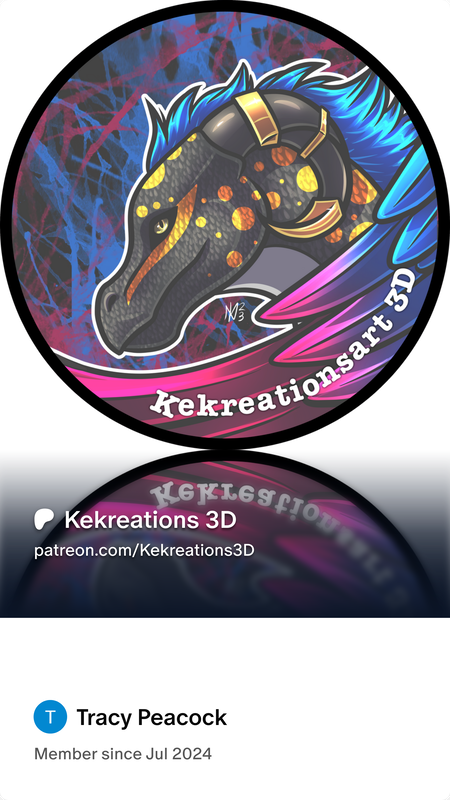|
Welcome, miniaturists, painters, and TTRPG enthusiasts! If you've found your way to this guide, chances are you’re ready to embark on the colorful journey of miniature painting. But before you dive in with your brushes and paints, let’s chat about the essential tools that will transform your painting experience from drab to fab. Whether you’re just starting out or looking to refine your skills, we’ll cover everything you need to paint like a pro—and maybe have a bit of fun along the way!
The Basics of Miniature Painting; Why Paint Miniatures? If you’re new to the world of TTRPGs, painting miniatures can feel like a rite of passage. Not only does it enhance your gaming experience, but it’s also a form of self-expression and creativity. Plus, there’s something undeniably satisfying about seeing a blank miniature evolve into a beautifully painted character, ready to take on epic quests! I remember when I first picked up a brush. Honestly, it was a bit daunting! I had a few friends who already painted, and they made it look so easy. I thought I would produce masterpieces right away, but as it turns out, it took several attempts before my orc looked more like he was ready to raid a buffet than a village. But hey, art isn’t just about the end result—it’s about the joy of creating! Different Types of Miniatures: Before we nail down those essential tools, let’s take a quick look at different types of miniatures. They usually come in three materials: plastic, metal, and resin. Each material has its quirks and challenges, which can affect your painting approach. - **Plastic** miniatures are lightweight and forgiving, great for beginners. - **Metal** miniatures have a satisfying weight, which can enhance your painting experience. - **Resin** miniatures often hold intricate details but may require a bit more care. Now, on to the fun part—what tools do we really need to get started? Essential Painting Tools; Paints: **Choosing the Right Paints** Let’s face it: paints are your lifeblood as a miniature painter! Imagine your palette as the treasure trove where colors come alive. Most miniaturists swear by **acrylic paints** because they’re easy to use, dry quickly, and are available in a myriad of vibrant colors. **Recommended Brands** - **Citadel**: Known for their wide range of colors and consistency. They even have specialty paints like washes and contrasts! - **Vallejo**: Renowned for smooth application and an extensive variety of shades. - **Reaper**: Great value for money and perfect for beginners, not to mention their "Bones" line is wonderfully durable! **Color Selection and Organization** As you build your collection, consider organizing your paints by color to make choosing easier. I use a simple plastic drawer set with labels for each color group. Why, you ask? Because during one chaotic painting session, I ended up with more greens than I'd care to admit, and my "goblin green" looked suspiciously like "snot green." An organized system can save you time and prevent unsightly mishaps! Brushes: **Importance of Using the Right Brushes** Your brushes are your magic wands in miniature painting. Using the right brush can make a world of difference! **Different Brush Types** - **Round Brushes**: Great for detail work. Think of them as your scalpel. - **Flat Brushes**: Perfect for covering larger areas. They’re like your trusty shield, protecting your patience! - **Detail Brushes**: These are your fine-tipped allies, essential for reaching those intricate areas. **Recommendations** Don’t hesitate to invest in quality brushes. Brands like **Winsor & Newton** and **Army Painter** offer fantastic options. And remember, the size matters! I made a rookie mistake with a brush that was too large for the detail work on my dwarf’s beard. Let’s just say that when I realized it, the dwarf looked like he had stepped out of a bad 80s music video instead of a fantasy realm! Palettes and Mixing Boards: **Purpose of Palettes** Your palette is where the magic of color mixing happens! It’s essential for creating custom shades and ensuring the colors on your miniature have a cohesive look. **Recommended Palette Types** - **Wet Palettes**: Great for keeping acrylics moist over long painting sessions. Perfect for those who like to roll with the punches! - **Traditional Palettes**: Easy to use and great for quick mixing when you're in the zone! **Mixing Techniques** Practice your mixing! I once tried to recreate a perfect sky blue, and instead ended up with a shade that closely resembled uranium. Mixing colors is an adventure, so don’t be afraid to experiment a bit! Preparation Tools; Paints: **Importance of Priming Miniatures** Before diving into colors, priming your miniatures is crucial! It provides a surface for your paint to grab onto, enhancing the durability and overall finish. **Recommended Types of Primers** - **Spray Primers**: Quick and easy to apply but be sure to use them in a well-ventilated space (trust me, you don’t want to end up like a wandering zombie because of fumes!). - **Brush-on Primers**: More control but can take a tad longer—ideal for smaller details. Sealers and Varnishes: **Benefits of Sealing Painted Miniatures** Once your painting is all done, it’s time to seal the deal (pun totally intended)! Sealers protect your masterpiece from scratches and wear. **Types of Sealers** - **Matte Varnish**: A classic choice that leaves a non-reflective finish. - **Gloss Varnish**: Perfect for a shiny look on armor or wet surfaces. - **Satin Varnish**: The best of both worlds if you can’t decide! I once sealed a particularly ornate dragon in high gloss to give it that shiny, magical look. The effect was stunning, but be careful—once, I might’ve accidentally put a glossy sealer on a character that wasn’t supposed to shine, and let’s just say they looked like a disco ball at a TTRPG dance party! Detailing Tools; Magnifying Glasses and Optivisors: **Importance of Magnification** Sometimes you need an extra pair of eyes! Magnifying glasses or Optivisors can help you spot the tiniest details, making painting much more enjoyable. They come in handy—especially when you’re trying to create ornate designs or focusing on that tiny face! Pin Vises and Drill Bits: **Introduction to Pinning Miniatures** For larger miniatures or those needing a bit of extra stability, consider using a pin vise. This nifty tool allows you to drill tiny holes and insert pins to hold parts together. It's the equivalent of putting a safety net beneath your acrobatic stunts! **Recommended Sizes** A small pin vise with drill bits ranging from 1mm to 2mm will have you covered for most miniatures. I recall my first attempt at pinning led to a slight mishap when my mini collapsed mid-paint session. Not. Fun. Lesson learned—stability first! Fine Detail Tools: **Additional Tools for Detailing** Some fine-tipped pens and sable brushes can help with details that require extra finesse. I always keep a few on hand on my workspace “just in case.” As much as I love painting, those tiny eyes always test my patience! Workspace Setup; Setting Up Your Work Surface: **Importance of a Dedicated Workspace** Creating a comfy workspace can elevate the painting experience. Find a space where you can leave your tools out and come back easily without having to dig around. Lighting: **The Effect of Lighting on Painting Quality** Good lighting is essential for avoiding shadowy mishaps. Natural light is fantastic, but LED desk lamps can offer excellent alternatives. I’ve learned this lesson the hard way; once, I painted a bright blue dragon in dim lighting only to discover the “stunning” shade looked like an eye-searing neon monstrosity the next day! Miscellaneous Tools; Cleaning Tools: **Key to Maintaining Your Brushes and Tools** Brush maintenance is critical for ensuring they last. Have a dedicated cleaning solution to properly care for your brushes. A good brush cleaning soap and gentle scrubbing can keep them in tip-top shape. Storage Solutions: **Tips for Organizing Your Painting Setup** Use storage solutions to keep your paints, brushes, and miniatures organized. A few plastic bins, spice racks, or simple drawer units can work wonders. Trust me, I once went paint-crazy, and afterward, hunting for that “perfect” shade felt like searching for a needle in a haystack! Conclusion: With that, you’re equipped with an arsenal of essential tools to elevate your miniature painting game from novice to pro! Whether you’re aiming for simple and fun or intricate and detailed, having the right tools ensures your painting sessions are satisfying and enjoyable. By investing in quality tools and creating a conducive workspace, you'll uncover the joy of painting and the satisfaction that comes from bringing characters to life. So grab your brushes, unleash your creativity, and embark on your miniature painting adventure! Have you tried out any tools that changed the game for you? Or maybe you have a favorite painting tip that you swear by? Share your experiences in the comments! Let’s build a vibrant community of miniaturists ready to inspire one another on this colorful journey! Happy painting, and may your miniatures shine as bright as your imagination!
0 Comments
Leave a Reply. |
Archives
December 2024
Categories |








 RSS Feed
RSS Feed